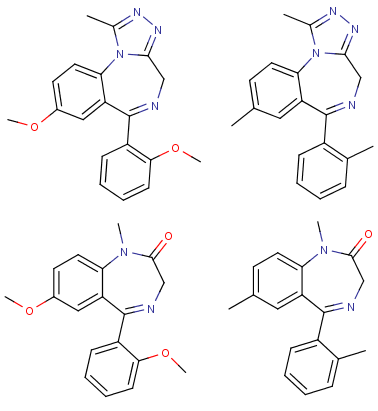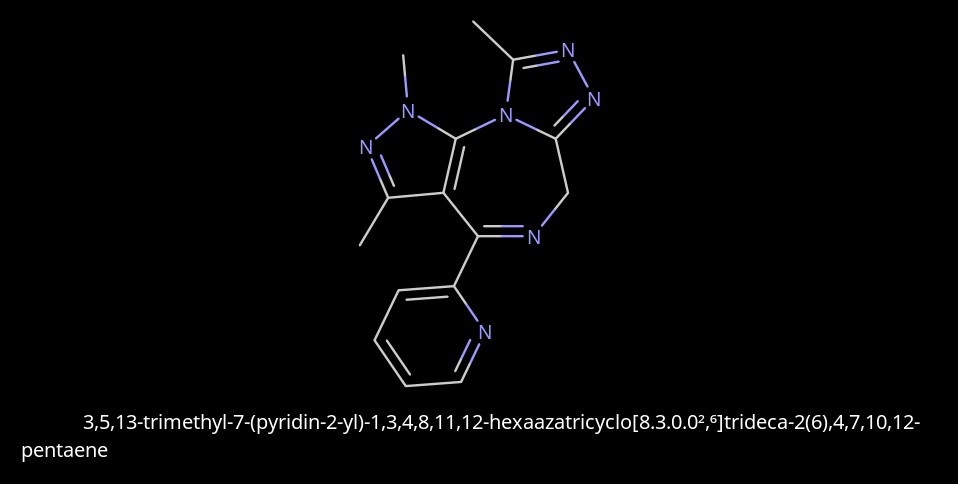Similarly with fluoro (but I am not sure if it is the case with other halogens), certain brain areas are fluorophilic (a term coined by.. DotChem

ie they'll accumulate pretty much ANY compound bearing a Fluorine atom regardless of its structure, whether it is in the form of simple fuoride ion or fluoro-substituted molecules:
a very stricking case is the pineal gland. Almost ALL PET imaging scan of 19-Fluorine labeled drugs showed a large concentration of the label in the pineal gland!! why, how fluoro containing compounds like to accumulate in the pineal?? go figure! That is why people are blaming fluorine in water as neurotoxines with good reason as it leads to calcification of the gland.
Could you post the studies illustrating this phenomenon across multiple
fluorine-18 PET tracers? Note that it is F-18, not F-19. My understanding is that [18F]DOPA accumulates in the pineal gland but that is thought to be
specific accumulation. I looked over reports from a variety of other F-18 labeled PET tracers and none of them accumulated in the pineal gland or accumulated non-specifically in particular structures. Such an effect should be obvious when comparing the distribution of F-18 and C-11 labeled tracers.
"PET imaging studies in nonhuman primates with 11C-fallypride showed radiotracer localization in dopaminergic brain regions such as caudate, putamen, thalamus and cortex.
This regional localization of 11C-fallypride is similar to that observed previously for 18F-fallypride."
http://www.sciencedirect.com/science/article/pii/S0968089603007077
http://www.sciencedirect.com/science/article/pii/S0969805199000128
"The D-2 antagonist, haloperidol effectively blocked binding of [18F]fallypride to the striata, whereas the D-1 antagonist, SCH 23390 did not block the specific binding."
https://www.ncbi.nlm.nih.gov/pubmed/7627142
"In our study of 18F-MEM pharmacokinetics in mice and in one monkey, relatively high uptake and retention levels of the radiotracer in the brain were observed. Approximately 75% of the total uptake in mouse brain was found in the hippocampus and in the cerebral cortices, regions known to contain the highest densities of the NMDA receptors.
The specificity of the 18F-MEM binding in mice brain was attested by the reduction of the activity concentration after co-injection of 18F-MEM with (+)-MK-801. Binding of 18F-MEM to the PCP site of the NMDA receptor channel was also confirmed by the reduction of radioactivity concentrations in the cortical areas, striatum, and in the cerebellum after pretreatment of the monkey with therapeutic doses of memantine and a pharmacological dose of (+)-MK-801."
https://www.ncbi.nlm.nih.gov/pubmed/9639292
"To our knowledge, (-)-5'-18F-delta-8-THC is the first cannabinoid positron-emitting derivative synthesized to date. This molecule was designed for visualizing cannabinoid binding sites in the primate brain using positron emission tomography imaging and was also used to study cannabinoid biodistribution in mice.
The results from the PET experiments discussed here show a number of similarities with those obtained by autoradiographical visualization of cannabinoid receptors in the brain using [3H]CP-55,940."
http://www.sciencedirect.com/science/article/pii/0091305791903545
"(-)-[18F]FEOBV brain uptake following intravenous injection was robust, with 2.65% dose/brain in mice at 5 min, and the regional localization matched the known distributions of presynaptic cholinergic markers at later times. ...Autoradiography of rat brain 3 h following i.v. injection of (-)-[18F]FEOBV showed high localization in brain areas rich in presynaptic cholinergic elements. ...
These studies show FEOBV maps cholinergic areas with high specificity in vivo..."
https://www.ncbi.nlm.nih.gov/pubmed/9776130
"PET studies in a cynomolgus monkey and metabolite studies by HPLC demonstrated
similar results by [18F]flumazenil as for [11C]flumazenil. In blocking experiments,
almost all radioactivity was inhibited by the addition of unlabeled flumazenil."
http://www.sciencedirect.com/science/article/pii/S0969805104001672
Note that none of these F-18 labeled tracers showed significant non-specific accumulation in the pineal glad or in other brain areas.



